Ferguson and Massey Ferguson tractor classics on display
Posted by Chris Graham on 19th June 2024
Bob Weir meets Dan Nicholson to find out more about what’s behind his collection of five Ferguson and Massey Ferguson tractor classics.
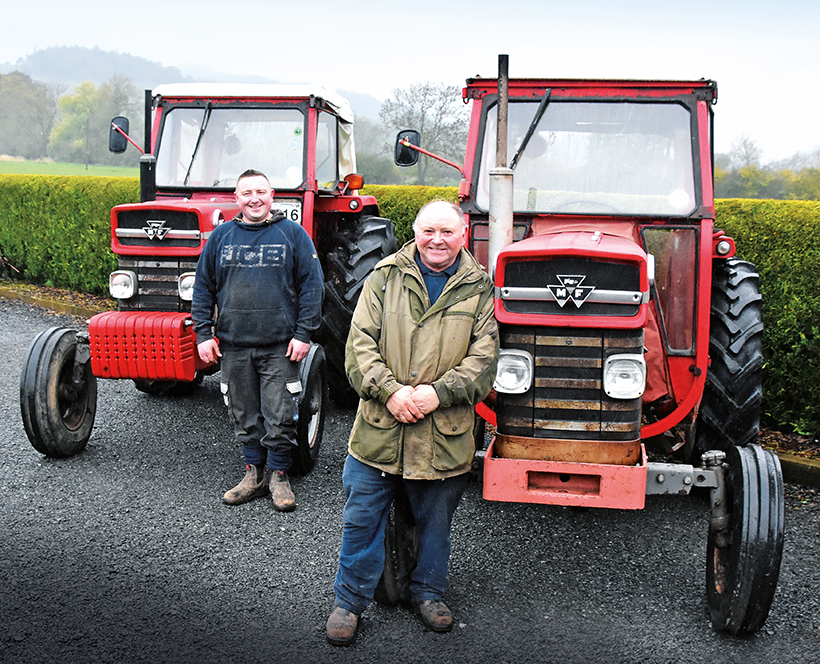
Tractor classics: Dan Nicholson (left) with his father, Dave.
Dan Nicholson lives in Craven Arms, near Ludlow, in South Shropshire, which is one of the most rural spots in the whole of the UK. The region is covered by forest, moorlands, hills and mixed quality farmland, and Dan has lived in the area all his life. He currently works for Network Plus, fixing overhead electrics and, although he has plenty of respect for several brands of tractor, it’s Massey Ferguson that sits at the top of his favourites list.
“I suppose I inherited a passion for old tractors from my father,” he explained to me. “I did have a Leyland and a Fordson Dexta at one point, before going ‘all red’,” he laughed, “and it’s been that way ever since.”
Like many families in South Shropshire, Dan’s background is in farming, although his father – Dave – eventually got involved in engineering. “My father’s got his own digger and tele-porter, and there’s plenty of work available in the area,” he said. “Nowadays, we spend whatever free time we’ve got messing around with tractors.”
First to arrive
Dan recalls that the first Massey Ferguson he bought was a Perkins-engined MF 35. His collection currently runs to five tractors although, according to his dad, there’s also a red and grey FE 35 on the horizon. “I’ve heard about several FE 35s knocking around with red paint, and this was done deliberately by owners because of the grey and gold diesel’s poor reputation for starting. Whether this is true, though, is open to debate.”
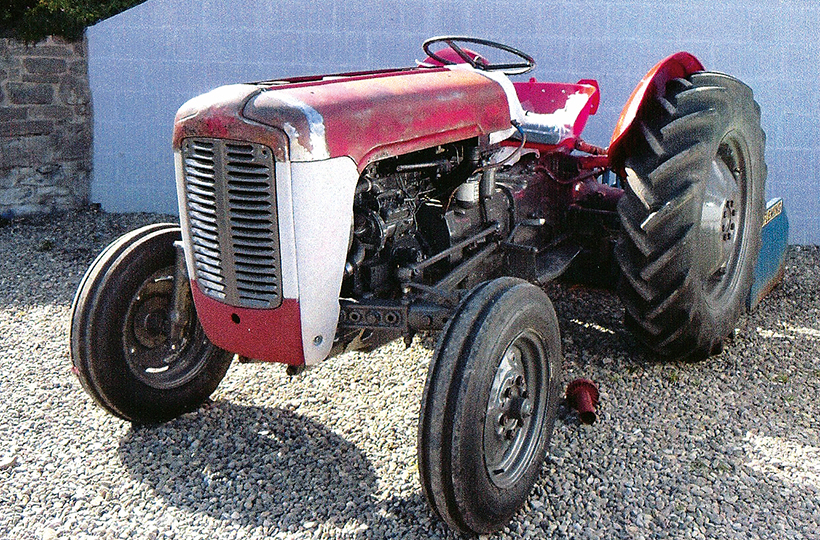
Here’s the restored 35 ‘as bought’.
Although Dan has a soft spot for all his tractors, he told me that his favourite is the MF 185. “I like that one because it’s fun to drive and a relative rarity. These days there don’t seem to be too many surviving examples,” he explained. Readers will recall that, in 1971, the 100 Series diverged into two separate lines. Buyers then got a choice between basic, no frills, value-for-money models, or the more expensive ‘Super Spec’ versions. While the ‘Standard rig’ 135, 165 and the new 185 were well kitted-out, they lacked desirable options like Multi-Power and power steering. The more up-market ‘Super Spec’ models offered more frills – albeit at a price – and even had a longer wheelbase to accommodate the deluxe safety cab.
Dan’s MF 185 was first registered in 1972. It’s a local machine and is fitted with a Sirocco Flexi Cab. At some point the tractor was bought by the late Les Morgan of Leintwardine, in Herefordshire, and he used it for shows and tractor runs. “We acquired the tractor in 2019,” Dan recalls. “It’s still in original condition, and I remember that Les used to ferry it over to Ireland to take part in the national tractor run there. Since we got the machine, it’s been involved in the occasional ploughing match.”
Plenty of work
Traditionally, there have always been plenty of ploughing matches organised in Shropshire, with the majority being held during the autumn months. Competition is fierce but friendly, and the events are run by local clubs. There are usually plenty of Ferguson and Massey Ferguson tractors in action, all vying for the trophies. “There’s an event going on most weekends later in the year, and matches are also popular in the spring,” said Dan. “I like taking part when I have the time; it’s a good day out, especially if it doesn’t rain!”
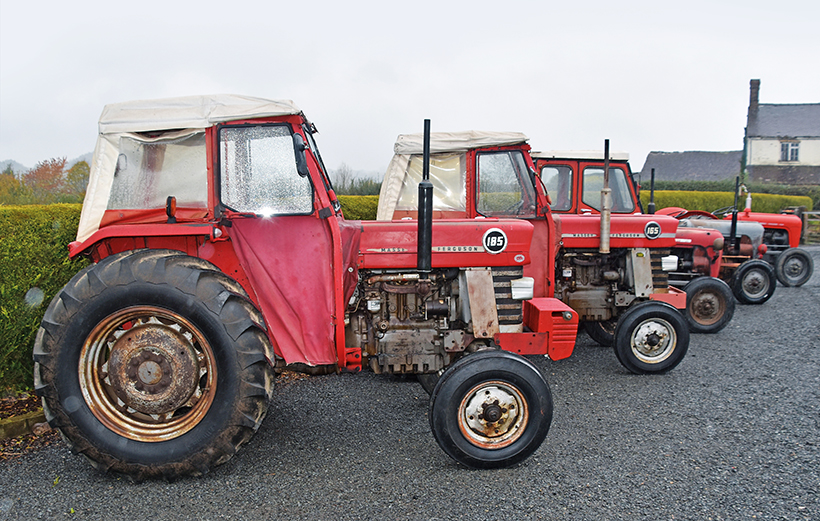
Both the MF 185 – Dan’s favourite – and the 165 are fitted with Sirocco, fabric-covered cabs.
Like a lot of lads brought up in the countryside, Dan is quite handy with tools, and does his own tractor servicing and maintenance. “I could strip down a tractor to its individual parts by the time I was in my late teens,” he explained. “My father gave me lots of help in the early days and I also learned on the job.”
Practice makes perfect, of course, and Dan recently put his skills to good use when he restored one of his pair of Massey Ferguson 35s. “The 35 was first registered in 1961 and was bought as a project out of a box van,” he told me. “It seemed a good idea at the time, but there was a lot of work involved in getting it back into shape.”
Dan is usually happy to keep his Massey Ferguson tractors in original condition but, on that occasion, he was looking for a challenge. “I wanted to have a crack at restoring a machine from scratch,” he said. “The Perkins three-cylinder-powered tractor was being used as a humble yard scraper, which gives you some idea of the work involved. Fortunately, the engine had already been rebuilt by the previous owner, but the rest of the make-over was my responsibility.”
Dan recalls that the tractor was in a poor state and needed a complete refurbishment. This involved welding on a new nose and tidying up the rest of the bodywork. “The tractor came pretty much as a rolling chassis,” he recalls. “We replaced the bonnet and got down to work.”

One of Dan’s MF 35s is equipped with a Sekura cab. Sekura, founded in Denmark in 1957, was the first company to produce specially designed driver safety structures based on profiled tubes, in 1973.
Time to paint
Dan also painted the tractor in his spare time, which was no mean feat as he was working very hard at his day job. “The Massey is still wearing its original Goodyear Diamond tyres, which adds to the provenance,” he explained. “I’ve already taken the 35 to a few local shows, and it played a starring role in my wedding to Jodie, which took place in 2021.”
Continuing with the MF 35 theme, Dan owns a second, 1961 three-cylinder 35, fitted with a Sekura hard cab. Nowadays safety cabs are taken for granted but, prior to their introduction, over-turning tractors were responsible for more fatal accidents on farms than any other cause. Cabs became compulsory on new tractors from September 1st, 1970, and that requirement was extended to existing machines in September 1977.
Massey Ferguson favoured Duple Motor Bodies Ltd as the provider of its early safety cabs, but there were plenty of alternatives. These included Alexander Duncan (Aberdeen) Ltd, Innes Walker Engineering Co Ltd, Lambourn Engineering Ltd, the Winsam Tractor Cabin Co and Sirocco Tractor Equipment Ltd.
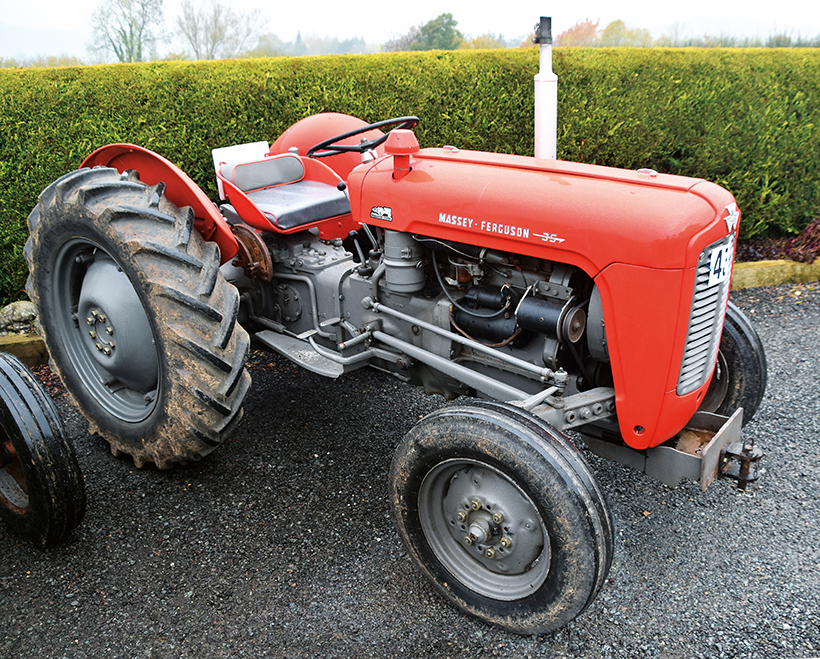
This 1961 MF 35 is the only one of Dan’s tractors to have been restored.
The last of these, Sirocco Tractor Equipment Ltd, was based at the Tractor Depot at Stamford Bridge, in Tarvin, near Chester. Its cabs used a new material called Bisonyl, which was a PVC (Polyvinyl Chloride) polyester-coated fabric. The material was reputed to be very tough and resistant to damaging chemicals, as well as extreme variations in temperature.
Other advantages of this material were that it was easy to clean, and the ‘warm air panel’ could be colour-matched to suit the make of the tractor. The roof and side panels were manufactured in white, which created a lighter environment for the driver sitting inside, together with a greater sense of space. “This tractor is another local machine that came from just down the road near Bucknell, in South Shropshire,” Dan explained, “and it was another of the late Les Morgan’s machines.”
Sheep farmer’s tractor
The village of Bucknell is close to the England/Wales border, in an area that’s been famous for sheep farming for generations; the industry still accounts for a significant share of the local economy today. “The Massey was bought new by a sheep farmer, and I’ve been told it was mostly used to help with the lambing,” said Dan. “It had a transport box fitted to the back end, and I’ve kept it in pretty much its original condition. I haven’t done a lot with this Massey so far, but am hoping to start using it for local shows and tractor runs.”
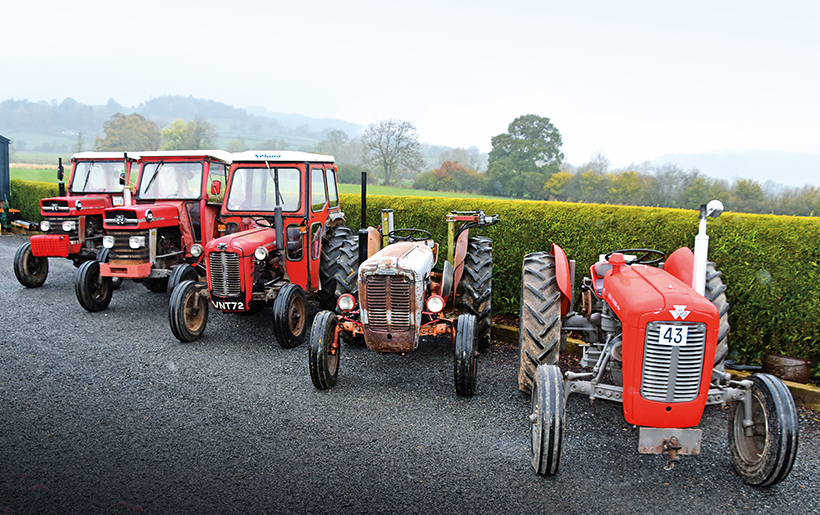
Dan’s tractor collection makes a pleasing line-up.
Working successfully on old tractors can require a lot of planning, and is often time-consuming. Adequate workspace is an important consideration with any restoration, especially during the winter months. “I have a full-time job, so any work has to be carried out in my spare time,” Dan explained. “I also have some family commitments, especially now that I’m married to Jodie. Fortunately, I have plenty of space and am able to keep the tractors sheltered from the weather. We get a lot of rain in Shropshire, particularly during the winter.”
There must have been a successful Sirocco agent operating in South Shropshire during the 1960s and ‘70s, because Dan’s Massey Ferguson 165 is also wearing one of its cabs. “The MF 165 is yet another that was once owned by the late Les Morgan, and this one was new in 1973,” Dan explained. “Once again, it’s a local machine and we acquired it in 2017. It remains in original condition and, during our time with it, it’s been involved in a number of tractor runs and rallies.”
Lots of choice
Fortunately, for the current generation of Massey Ferguson tractor collectors, there are plenty of interesting models to choose from, although prices are certainly on the increase these days. Tractors like the MF 35 and the MF 135 were regular best-sellers back in the day, and plenty of examples have survived into retirement. “I source most of my tractors via word of mouth, although I’m happy to use the internet as well,” Dan told me. “As a general rule, I prefer tractors in ‘farmyard condition’ as, not only are these generally cheaper, but I think they’re more authentic, too.”
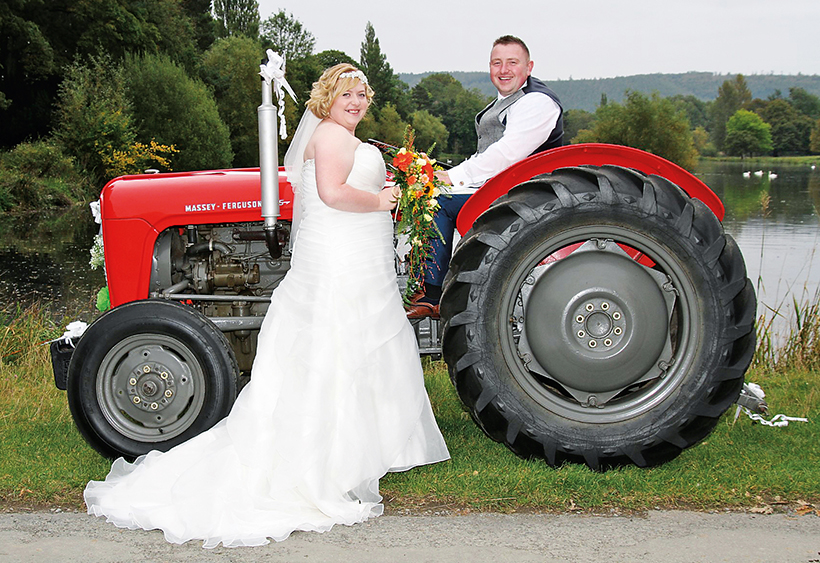
Dan, Jodie and the restored MF 35 on the couple’s wedding day in 2021.
The last of Dan’s ‘Famous Five’ is a 1957 Ferguson FE 35 ‘Grey/Gold’ that also has Bucknell connections. “This is my father Dave’s favourite tractor, and also came from the late Les Morgan,” he recalls. The FE 35 was a ground-breaking tractor even though it was only on sale for a couple years in Ferguson livery. Buyers had the option of diesel or petrol engines and, thanks to the Standard diesel-equipped version, plus the unusual colour scheme, the model attracted its fair share of controversy.
“The four-cylinder diesel was criticised for its poor starting performance, particularly in cold weather,” said Dan. “That said, I know some enthusiasts that say this is nonsense, and the problems are usually down to owners who aren’t familiar with the tractor. Some collectors even go out of their way to acquire the four-cylinder Standard unit in preference to the later, three-cylinder Perkins diesels.”
The correct shade of the gold paint has also set some restorer’s tongues wagging, and has been the subject of much debate. Opinions vary and are usually taken in good spirit. “Looking back, the four Les Morgan tractors were all on the same farm from new,” Dan explained. “The FE 35 was originally used as a loader and would have been a much sought-after asset back in the 1950s.”
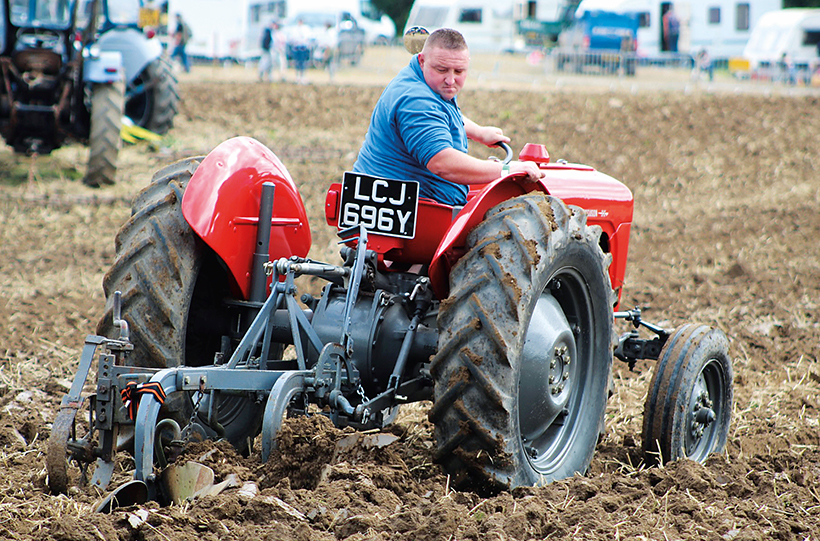
Dan enjoying a spot of ploughing.
At that time diesel power was just coming into its own, and farmers were beginning to appreciate the lugging potential and extra economy. The FE 35 was a comprehensive upgrade of the grey Fergie and, although the new Ferguson didn’t go into production until 1956, the tractor had been designed before the merger with Massey-Harris, which took place in 1953. The new tractor was preceded by the Detroit-built TO-35, which was equipped with the same updates.
“We bought the FE 35 in 2019 and, even after all those years, the machine is still earning a living,” said Dan. “We use it for topping the side of a riverbank during the summer, and also take it on local tractor runs.”
Dan is happy with his collection for the time being, although you can ‘never say never’ with Massey Ferguson fans. “Dad has got this other FE 35 on the go, and I might be interested if an MF 135 happens to come along at the right price,” he said. It looks like Jodie might have to keep a watchful eye on her husband for the foreseeable future!
This feature comes from the latest issue of Tractor & Machinery, and you can get a money-saving subscription to this magazine simply by clicking HERE
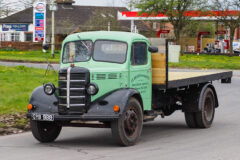
Previous Post
Brilliant Bedford O lorry budget restoration
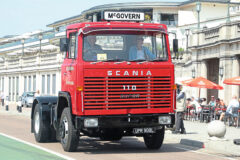
Next Post
HCVS London to Brighton Commercial Run, 2024



